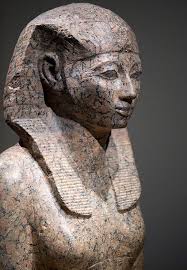Hatsheput
The Cardinal celebrates LGBTQ+ History Month!

October 4, 2021
Hatsheput was the fifth pharaoh of the Eighteenth dynasty and the second confirmed female pharaoh after Sobekneferu. She called herself “king” and a lot of her monuments, she referred to herself as “her majesty, the king.” To even assert her kingship she had a false beard to fit her chin and wore the garb of a male monarch. She even wore symbols of kings but with her female figure, she did a striding pose of a king in her traditional restrictive ankle-length gown.
Hatsheput was born in 1507 BC and died in 1458 at the age of 50. She accomplished a lot in Egypt, like having trade networks and even funded a mission to the Land of Punt. She was even known for being one of the most prolific builders in Ancient Egypt. Her buildings were grander and more numerous than those of her Middle Kingdom predecessors. She even changed the world by new political and architectural foundations which her successor stepson Thutmose the third, and would grow Egypt’s dominance of North Africa.
Hatshepsut was not defined by her gender but exploited it energetically and ingeniously. Hatshepsut’s statuary manipulated the gender binary but productively used it to her advantage. Some statues represented her as female, some represented her as male, but many surpassed these categories. After her death in 1456 BCE by natural causes, Thutmose III and his followers made every effort to erase her rule from history. Statues were smashed, inscriptions referring to her as king were chipped away and any monuments that could not be torn down were hidden behind stone walls.

